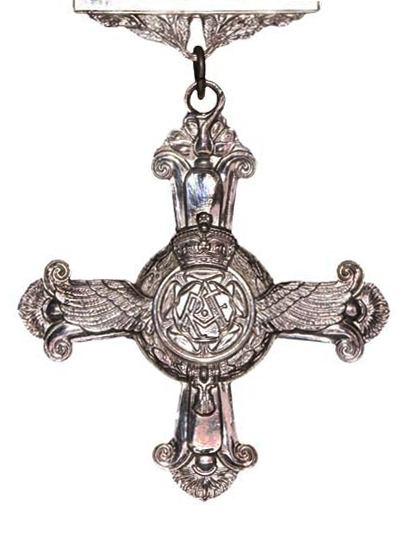Type Military decoration Established 3 June 1918 | Status Currently awarded | |
 | ||
Awarded for ... exemplary gallantry during active operations against the enemy in the air. Total awarded George V: 11,227George VI: 21,657Total: 32,884 | ||
The Distinguished Flying Cross (DFC) is the third-level military decoration awarded to personnel of the United Kingdom's Royal Air Force and other services, and formerly to officers of other Commonwealth countries, instituted for "an act or acts of valour, courage or devotion to duty whilst flying in active operations against the enemy".
Contents
History
The award was established on 3 June 1918, shortly after the formation of the Royal Air Force (RAF). It was originally awarded to RAF commissioned and warrant officers. During the Second World War, it was also awarded to Royal Artillery officers serving on attachment to the RAF as pilots-cum-artillery observers. Since the Second World War, the award has been open to army and naval aviation officers, and to other ranks since 1993, when the Distinguished Flying Medal, which had until then been awarded to other ranks, was discontinued. Recipients of the Distinguished Flying Cross are entitled to use the post-nominal letters "DFC". A bar is added to the ribbon for holders of the DFC who received a second award.
During the First World War, approximately 1,100 DFCs were awarded, with 70 first bars and 3-second bars. During the Second World War, 20,354 DFCs were awarded, the most of any award, with approximately 1,550 first bars and 45-second bars.
Honorary awards were made on 964 occasions to aircrew from other non-Commonwealth countries.
Description
The decoration is a cross flory and is 2⅛ inches wide. The horizontal and bottom bars are terminated with bumps, the upper bar with a rose. The decoration's face features aeroplane propellers, superimposed on the vertical arms of the cross, and wings on the horizontal arms. In the centre is a laurel wreath around the RAF monogram, surmounted by an Imperial Crown.
The reverse features the Royal Cypher in the centre and the year of issue engraved on the lower arm. The decoration is issued named.
The ribbon was originally white with purple broad horizontal stripes, but it was changed in 1919 to the current white with purple broad diagonal stripes.
The decoration was designed by Edward Carter Preston.
